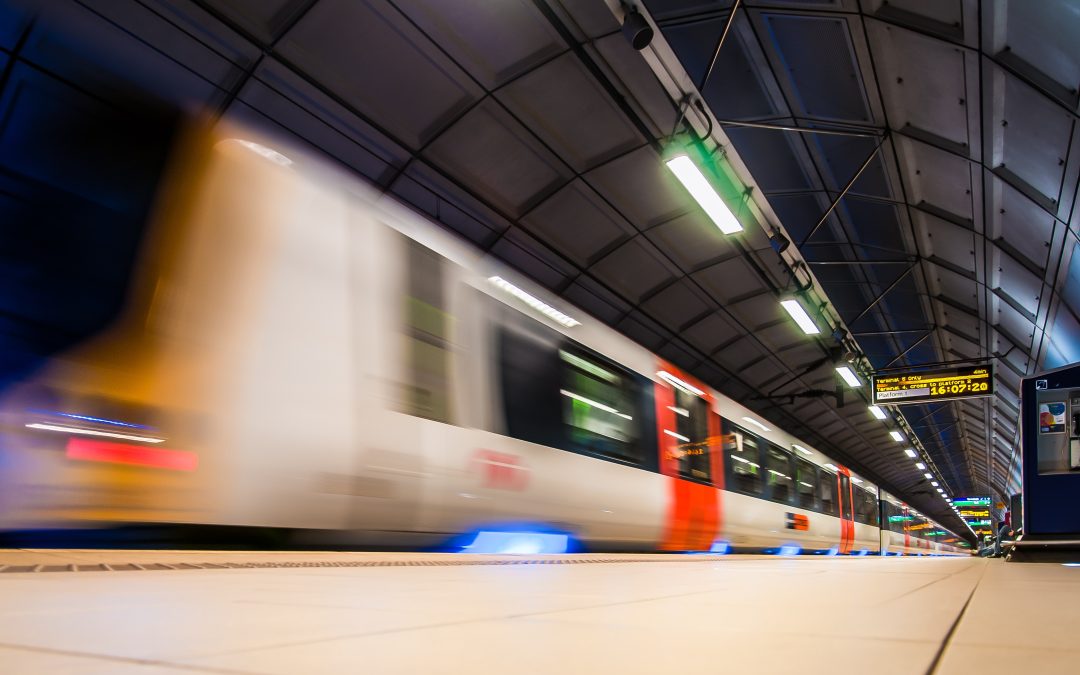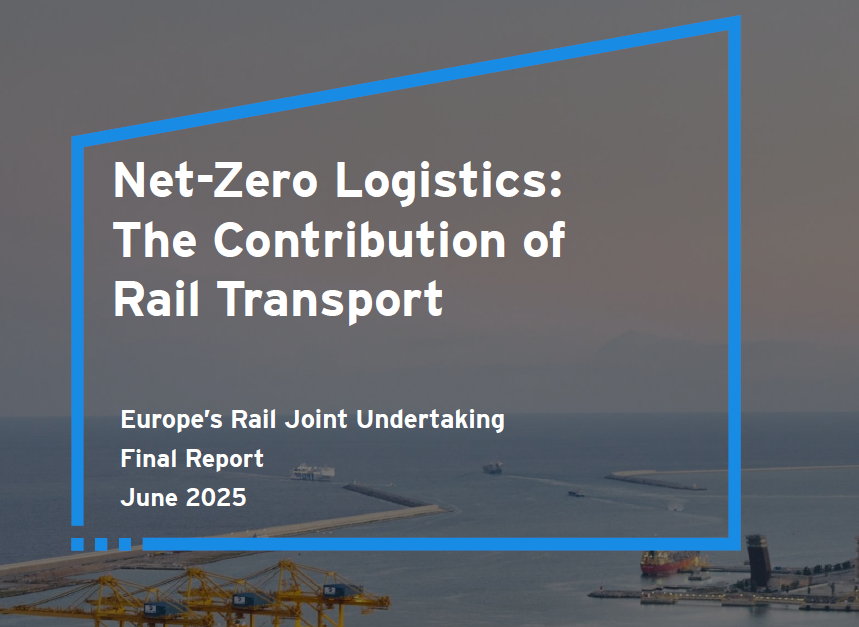FP1-MOTIONAL D2.4: Demonstration Strategy Flagship Project FP1-Motional explores solutions for the planning and...
To benefit the rail sector and its final users, our new Pods4Rail project, worth EUR 2.9 million with 15 partners, is ready to substantiate the concept for a digitalised, decentralised mobility service with multimodal interfaces to different transport modes in order to carry out a concept for a door-to-door transport chain based on rail by 2025 and thus contribute to the necessary transformation of the European rail network. In this article, Pods4Rail Coordinator, Dirk Winkler from our Founding Member Siemens explains what to expect from the project.
Tell us what is encompassed in ‘Innovation on new approaches for guided transport modes’ and how Pods4Rail aims to change the transport landscape in Europe?
The approach of Pods4Rail aims to investigate a cost-effective and efficient transport service in a harmonised co-existence with the existing railway and using its infrastructure. The concept of the Pod system is tailored to the European topology of transport networks and is designed to meet the transport needs of the European Union. Basic assumptions and R&I results can also be applied to the broader global transport market. The primary aim is to examine how such a system can be implemented for rail transport, considering the intermodal switching options to road transport and/or cable car systems.
The disruptive approach of an autonomously driving vehicle (Pod) comprises the drive unit (Carrier) and the transport containers (Transport Unit). Each component must be designed to meet different transport requirements. The unrestricted change from one means of transport to another, facilitated by a reloading device, as well as the operation and necessary logistics, can only be achieved through new solutions.
The autonomous operation of vehicles requires a new type of operating system that, on one hand, contains the technical solutions for autonomous driving and, on the other hand, enables intelligent control and scheduling of vehicles that communicate with one another and, if necessary, are virtually coupled.
What are the three main objectives of the Pods4Rail and how it will facilitate improved, high-quality and reliable regional railways?
The main objectives of the project are to examine the economic and technical framework of the proposed Pod system and to ensure basic feasibility before technical implementation takes place. In this way, the project wants to ensure that the first step is to clarify whether implementing the idea makes sense and if feasible develop the technical basis. Only then, the system can be technically defined, which aims at intermodal transport that is available at any time, and meets all user requirements in terms of quality, comfort, accessibility, and availability, for both passenger and freight transport. Above all, it is intended to improve public transport in rural areas.
Can you explain how Pods4Rail contributes to the European Green Deal and the Sustainable and Smart Mobility Strategy, of the European Commission?
The idea of Pods4Rail arose to create a railway-based system that, on one hand, strengthens the existing railway system, and on the other hand takes advantage of the other modes of transport, such as road or cable cars, while linking the systems in an innovative way. The concept of sustainable and intelligent mobility can build a bridge between modes of transport because it creates a more advantageous overall system for everyone and first focuses on people’s mobility needs, and not just optimises individual means of transport. The concept aims to make optimal use of existing transport systems while reducing the need for building new infrastructure. This will enable less land use conserve resources, minimise emissions, and protect the ecosystems for future generations. From a transport economics perspective, it is important that the competitive advantages of the different modes of transport can develop and should be used where they are most appropriate. Rail-based systems are particularly important for sustainable mobility due to their mass performance.
What are some the main challenges the currently running Pods4Rail projects will have to overcome?
The main challenges of the project, which aims to develop a completely new railway-based transport system, lie in several areas. These include designing a future economic and technical solution for an extremely lightweight vehicle concept (Carrier and Transport Unit). Additionally, challenges arise in creating a multimodal traffic telematics and logistics system (Mobility Management System), as well as addressing other technical aspects required for the system in connection with the intermodal approach of the concept. One major challenge in this context is navigating the currently existing set of standards and legal aspects. This is particularly critical as there is no regulatory framework yet established.
When can we expect to see the first results coming from the Pods4Rail project and what will these results cover?
The project, initiated in September 2023, unveiled its initial findings in December of the same year and continues to release ongoing results on its project homepage https://pods4rail.eu/. As of now, the system definition (D2.1), an evaluation/benchmark of available and conceptual multi-modal mobility systems (D2.2), legislative and normative framework analysis (D3.1), and description of use cases (D4.1) have been made available on the website.
Based on the prediction of the project, when will we see these solutions deployed in the current mobility system?
The Pods4Rail project aims to achieve the vision of a rail-based fully automated multimodal mobility system for passengers and goods, which is standardised, scalable, and suitable for all transport modes, as set out in ERRAC’s “Rail Strategic Research and Innovation Agenda’. The goal of the partners involved in the project is to create a demonstrator for testing the system by 2030 and to enable an initial solution for use on branch lines by 2040.
How is Pods4Rail project interacting with the other EU-Rail FPs and the System Pillar?
The significant outcomes anticipated from other Flagship Projects (FPs), such as advancements in autonomous driving solutions, virtual coupling of rail vehicles, and innovations in control, safety technology, and traffic telematics, are poised to impact the specifications and subsequent technical execution of a concept under consideration in the Pods4Rail project. Consequently, informal exchanges are being conducted with the Flagship Projects. The findings from the analysis of the current standards landscape and existing legal regulations in the project are being juxtaposed with the activities in the System Pillar, and where needed, integrated into them.
What are the benefits of the final users when using these technologies?
The introduction of a disruptive concept as intended in the Pods4Rail project, which aims to provide a stronger connection between the individual transport modes, will require a change in the behaviour of the users. The idea of a passenger cabin that can be booked and used individually and which can collect the passenger directly from the front door and take the person to the desired destination without changing the vehicle is a clear increase in comfort. Such a system would make the ownership of private vehicles less relevant than today, reduce the required parking space for cars and thereby make the use of public space more sustainable. In freight transport, which is already partially intermodal, the pod system could provide new impetus in on-demand transport, particularly in general cargo or parcel logistics. Another aim of the system is to make operation more cost-effective and efficient on one hand through autonomous, lighter vehicles, and on the other hand lateral signalling technology will not be required on secondary routes only served by this system as it will be managed onboard. The concept of carriers as “moving infrastructure” being in use most of the time can also help reduce the number of vehicles and increase the efficiency of the railway system. The challenge for the project lies in developing the appropriate solutions and also in addressing the new needs in existing transport regulations.

















